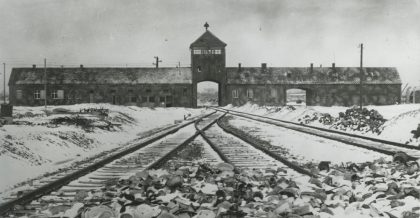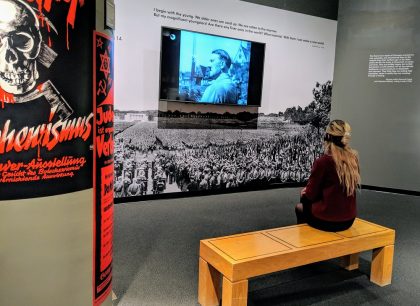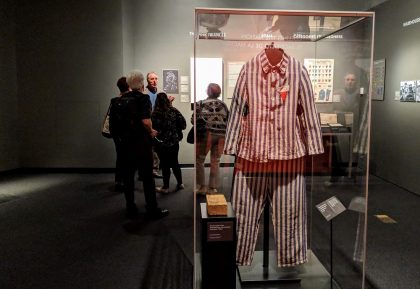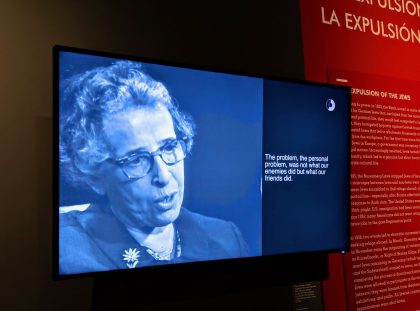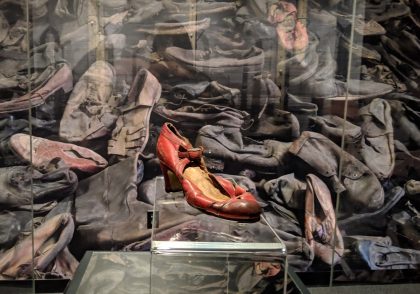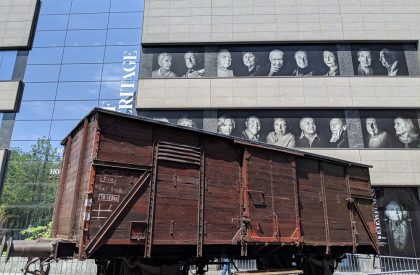A massive and moving exhibit on Auschwitz comes to the Museum of Jewish Heritage
“Auschwitz isn’t a different planet. It emerges from our same culture.” This is how curator Paul Salmons introduced the show that opens today at the Museum of the Jewish Heritage during a press tour last week. And this sums up just what the exhibit aims to do: demonstrate that the Holocaust was not just a moment in time; it was a process that started with words and hatred. And it was born in a time like our own, in a world like our own, or as it says in the title, “not long ago, not far away.”
At the risk of sounding preachy, go. Or better, take the kids. It won’t be fun, and it will definitely be haunting – I found myself on the verge of tears almost throughout – but it will be the opposite of doing nothing, or worse, shrugging, which is sometimes what I find myself doing lately. It just seems to be too overwhelming to do anything else.
“We are fighting antisemitism every day, and the question is, Why?” This is what Ronald Lauder asked the audience at the opening. And then he answered his own question: survey after survey show that three generations later, children don’t know about the Holocaust. Education is the only way to counteract the narrative. “It won’t stop antisemitism. But for the first time children will understand the horrors of Auschwitz.”
So how tough is it? Tough. Really tough. But it builds in momentum just as the Nazi movement did, and as the horrors did as well. The focus throughout is on Auschwitz – which is in fact the German name for the Polish town of Oshpitzin and not just the name of the death camp. Room by room (there are 20 galleries), videos, displays, testimony from survivors, relics, photographs, objects all serve to illustrate how the hatred for Jews gained momentum, until by the end, they were being murdered by the thousands each day at Auschwitz.
“Our exhibit is about agency and complicity,” said Salmons. The curators wanted to show that it wasn’t just Hitler who was at the center of everything. There were hundreds of men and women who were dedicated and ambitious in their hatred. The exhibit also tries to demonstrate that it was a continent-wide genocide that had long tentacles. The entire Roma gypsy population was wiped out. All of them. Gay men, Jehovah’s Witnesses and the disabled were targeted and killed by the tens of thousands. But even if you thought you knew the numbers or understood the scope, Salmons would toss out another fact, such as in German occupied Europe, 90 percent of all Jewish children – 1.5 million – were murdered.
The exhibit is designed to give you small breaks to let your mind regroup and refocus as you move from room to room – 20 galleries in all with more than 700 original objects. You will need it. When you have learned all you can bear, you will have at the least answered this question, posed by Robert Jan van Pelt, the chief curator: “what can I do today to make our world a little better? That is our responsibility and our obligation.”
Auschwitz. Not long ago. Not far away.
Museum of Jewish Heritage
May 8, 2019 through Jan. 3, 2020
mjhnyc.org







